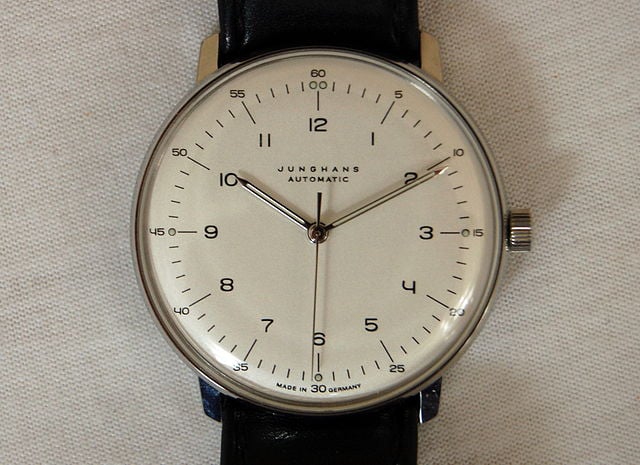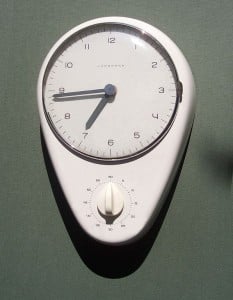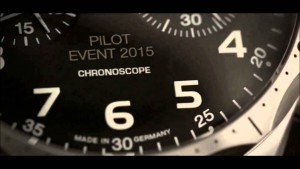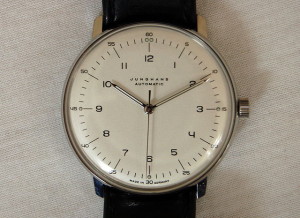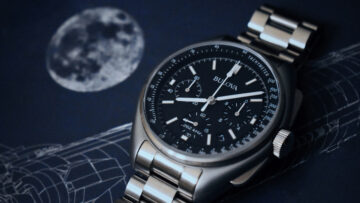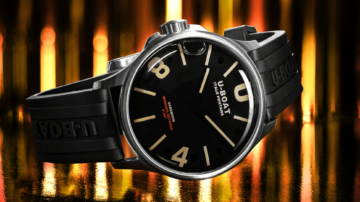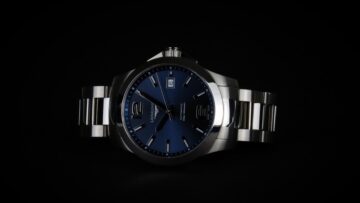Junghans watches are a well known and well respected brand in the watch industry. They are known for their minimalistic style which sports clean lines, classic styling and clever functions. But how did they become the iconic brand that they are today? In today’s post we will explore the history of Junghans watches – the brand who are proud to produce “The German Watch”.
The Early Beginnings of Junghans Watches
Junghans was founded under the name “Junghans and Tobler” in Schramberg, Germany all the way back in 1861. Erhard Junghans went into business with his brother in law Jakob Zeller-Tobler and opened up a clock component factory in the Lauterbachtal valley. They took advantage of the most modern manufacturing techniques to produce watch components in a cost effective way. They initially produced components for Black Forrest clocks such as wooden cases, hands and pendulums.
The first Junghans watches appeared in 1866 shortly before Erhard Junghans passed away and his wife took control of the company. She was followed at the head of the company by his two sons Erhard Jr and Arthur Junghans. Arthur Junghans took a lot of inspiration from watchmakers in the United States of America where he spent a lot of his time. Junghans were able to produce a large quantity of quality watches utilising the innovative production techniques he had witnessed in the States. These watches were very well received by the public who were able to benefit from the cheaper prices that Junghans offered.
The next step was to introduce the world famous Junghans star which is the trademark of Junghans. It started life as a 5-point star in 1888 and then developed into 8-points in 1890 In the same year they also produced the legendary Calibre 10 which remained the standard movement and unchanged for over 50 years. By 1903 Junghans were the worlds largest watch factory producing over 3 million Junghans watches every single year. They needed to expand the manufacturing plant in order to house all of their employees and continue to increase their manufacturing capability.
Junghans have always been innvators in the world of watchmaking. In 1912 they became one of the first manufacturers to create clocks and watches which could be visible in the dark. This innovative spirit has continued throughout the years and years of Junghans watches, even after the removal of the factory after World War 2. Even after that happened they produced the first wristwatch chronograph – the J88 – in 1946.
The first wristwatches produced by Junghans appeared in 1928 – initially using movements purchased from Ruhla. By 1930, Junghans were producing their own movements, including the J-series which was widely considered one of the best in the 1950’s.
Focusing on Accuracy: The Quartz Revolution and Related Innovations
Junghans was taken over in 1956 by the Diehl Group and one of the first ranges after the takeover was produced in collaboration with Swiss artist Max Bill. The wall clocks, table clocks and wristwatches produced by Max Bill were timeless classics. Their popularity was so great that Junghans re-released them in their current Max Bill by Junghans series.
Junghans started working with the newly discovered quartz technology, releasing their first quartz clock that year. Three years later, they released the first German quartz wristwatch – the Astro-Quartz. At this time Junghans decided to stop producing mechanical watches and decided that they should focus all of their attention on perfecting the quartz watch.
Their use of this technology brought the company international recognition when Junghans were selected as official timekeepers of the 1972 Olympics in West Germany. Junghans provided a wide range of measuring instruments, including coloured photographs on the finish line which were provided to the press. Junghans then travelled to athletic events in Prague, Mexico and Turin to measure records set there, too.
In 1985 Junghans produced the first ever radio-controlled table clock which synchronised with the Physikalisch-Technische Bundesanstalt atomic clock in Braunschweig. In 1990, the first ever radio controlled solar watch – the MEGA 1 – was released.
A New Direction For Junghans Watches
In 2000 Junghans watches were taken over by EganaGoldpfeil Holding, watch expert Heinz W. Pfeifer looked after the company and took them in a new direction. The company reoriented their entire offering and moved back towards quality mechanical watches. The Junghans collection is focused around the motto – “…From Tradition to Future” and the three pillars of the brand “Tradition, Innovation and Continuity.”
The Junghans Meister collection appeared in 2006/7 which featured mechanical movements inside a beautiful design. The main Junghans collection was also revised, with the MEGA 1000 being released as a tribute to their first radio controlled solar watch. A daughter brand – Erhard Junghans, paying tribute to the founder, was launched in 2007.
Unfortunately for Junghans, EganaGoldpfeil fell into financial difficulties which put the future of the Junghans brand at risk. Thankfully the storied history of the brand led to a number of offers being put forward to take over the brand. Local entrepreneur Hans-Jochem Steim and his son Hannes Steim were the favoured choice – and they took over the brand in 2008. The Ergard Junghans brand was integrated as a collection, alongside the Max Bill by Junghans collection.
The Junghans brand celebrated its 150th anniversary in 2011 and few would bet against it enjoying an amazing 200th anniversary in 45 years time.
Images: Wolfgang Glock, Christos Vittoratos

